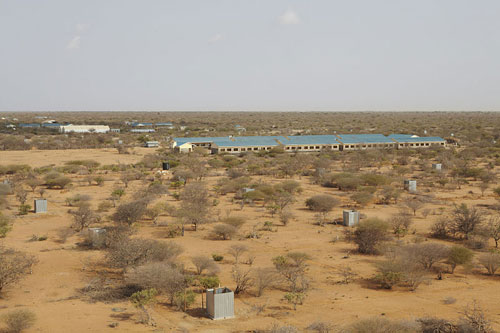|
|
The South
Asian Life & Times - SALT |
|
|||
|
Cover Story
Tech Stories 2011 Adventure &
Sports
Environment
Vishnu - Hinduism's
|
|
||||
|
2011 was an ecologically devastating year. It saw
natural disasters, floods, famine – and the world's second worst nuclear
disaster. More than 30,000 people lost their lives due to catastrophes in
the first 11 months of 2011, with the majority of those being in Japan. The Alarming
Facts 2011 saw the world population reach 7 billion The world continued to warm throughout 2011 Catastrophic floods in Brazil, Pakistan, India, and
Thailand. Over 5.5 million people were affected by flooding in Pakistan and
2 million in India. More than 10 million people in Somalia and the Horn of
Africa were affected by the worst drought in 60 years and led to the death
of thousands of people and millions of animals.
The Arctic sea ice hit a record low 2011 was a year of major earthquakes. The year began
with a jolt. In the first two months alone - Argentina, Chile, Iran,
Pakistan, Tajikistan, Tonga, Burma, the Solomon Islands, Tonga, Sulawesi,
Fiji and New Zealand were all hit by major seismic shocks. The worst – 9.1 -
was the one that led to the disastrous tsunami off the coast of Japan in
March. It killed 15,500 people, another 4,000 are missing, 160,000 fled the
area, and it caused the meltdowns of three nuclear reactors at the Fukushima
Daiichi power plant.
Radiation
levels, in places, remain dangerously high. Severe earthquakes also rocked
India, Nepal, and Turkey later in the year. There are now only 18-22 Siberian tigers that remain in
the wild. The Heartening
Update Deforestation in the Amazon region has fallen to its
lowest level in 23 years. Tiger population in India has increased from 1,411 in
2007 to 1,706 today. Half the world’s tigers live in India. The gorilla population in the Virunga Mountains of
Africa has increased from 380 in 2003 to 480 in 2011.
The Most Admirable Conservation Initiative 2011
Yasuni National Park Saved From Oil Drilling
Located at the intersection of the Amazon rainforest, the Andean mountains,
and the equator, the 3,800 square mile Yasuní National Park in Ecuador is
one of the world’s most biodiverse regions. A designated World Biosphere
Reserve, it is also home to two native communities living in voluntary
isolation.
As we go to press, news has reached us that “An alliance of European local
authorities, national governments, US film stars, Japanese shops, soft drink
companies and Russian foundations have stepped in to prevent oil companies
exploiting 900m barrels of crude oil from the Yasuni National Park.
According to the UNDP, the "crowdfunding" initiative had raised $116m (£75m)
to compensate Ecuador for not drilling the 722 square miles of "core"
Amazonian rainforest for 900m barrels of oil.
The Guardian writes: “The Park is thought to have more mammal, bird,
amphibian and plant species than any other spot on earth. Development of the
oilfield, which was planned to take place immediately if the money had not
been raised, would have inevitably led to ecological devastation and the
eventual release of over 400m tonnes of CO2.”
|
|||||
|
Copyright © 2000 - 2012 [the-south-asian.com]. Intellectual Property. All rights reserved. |
|||||
